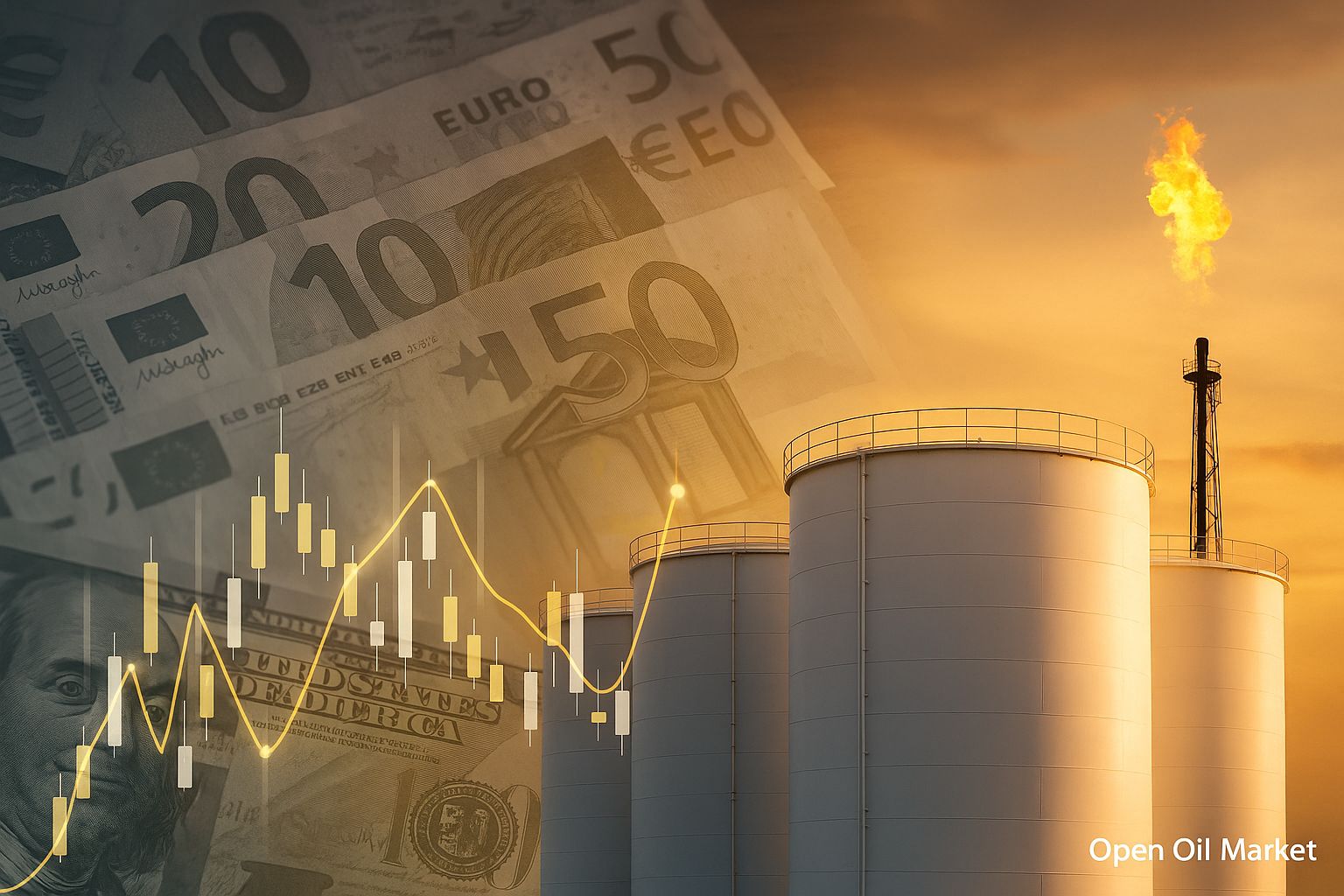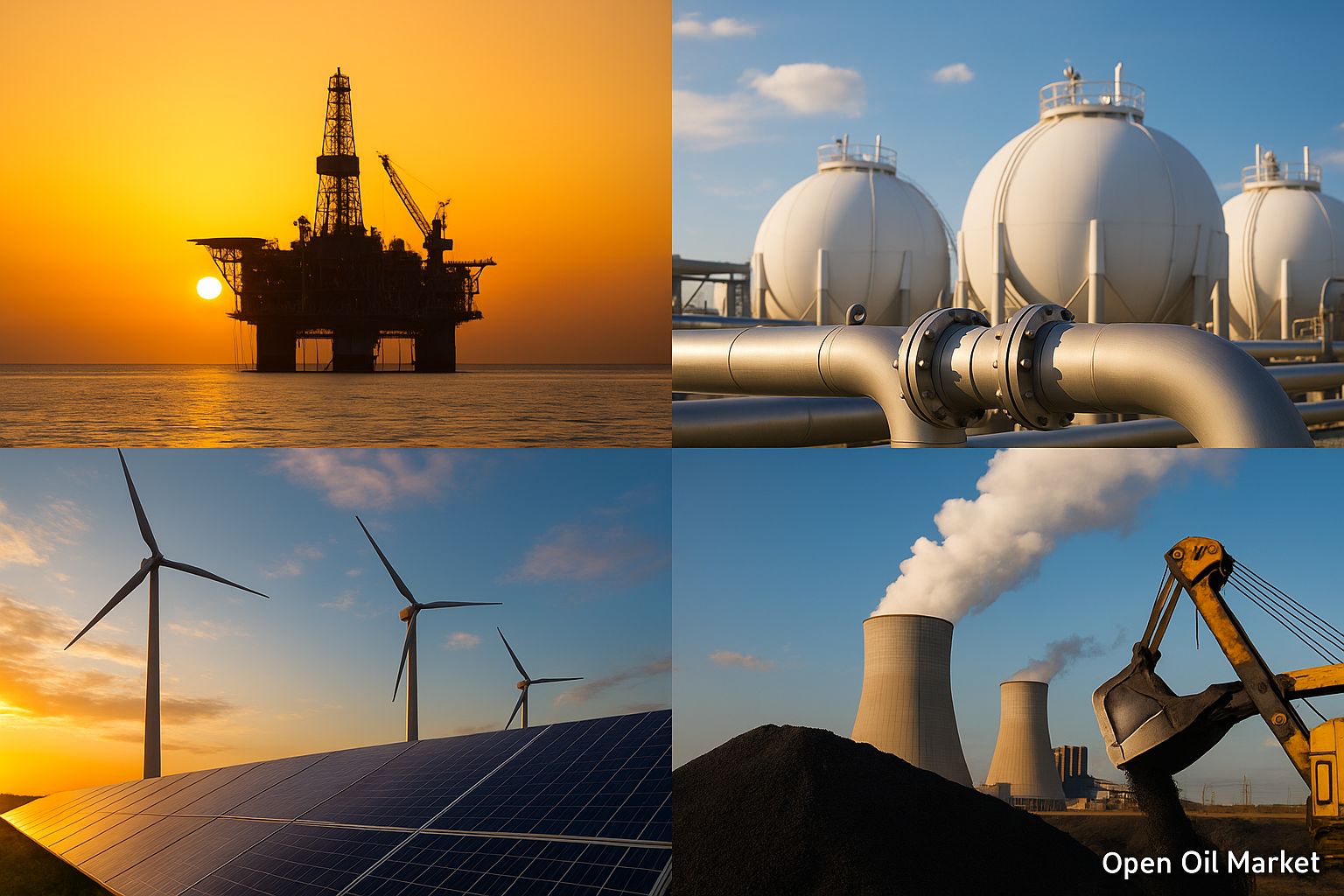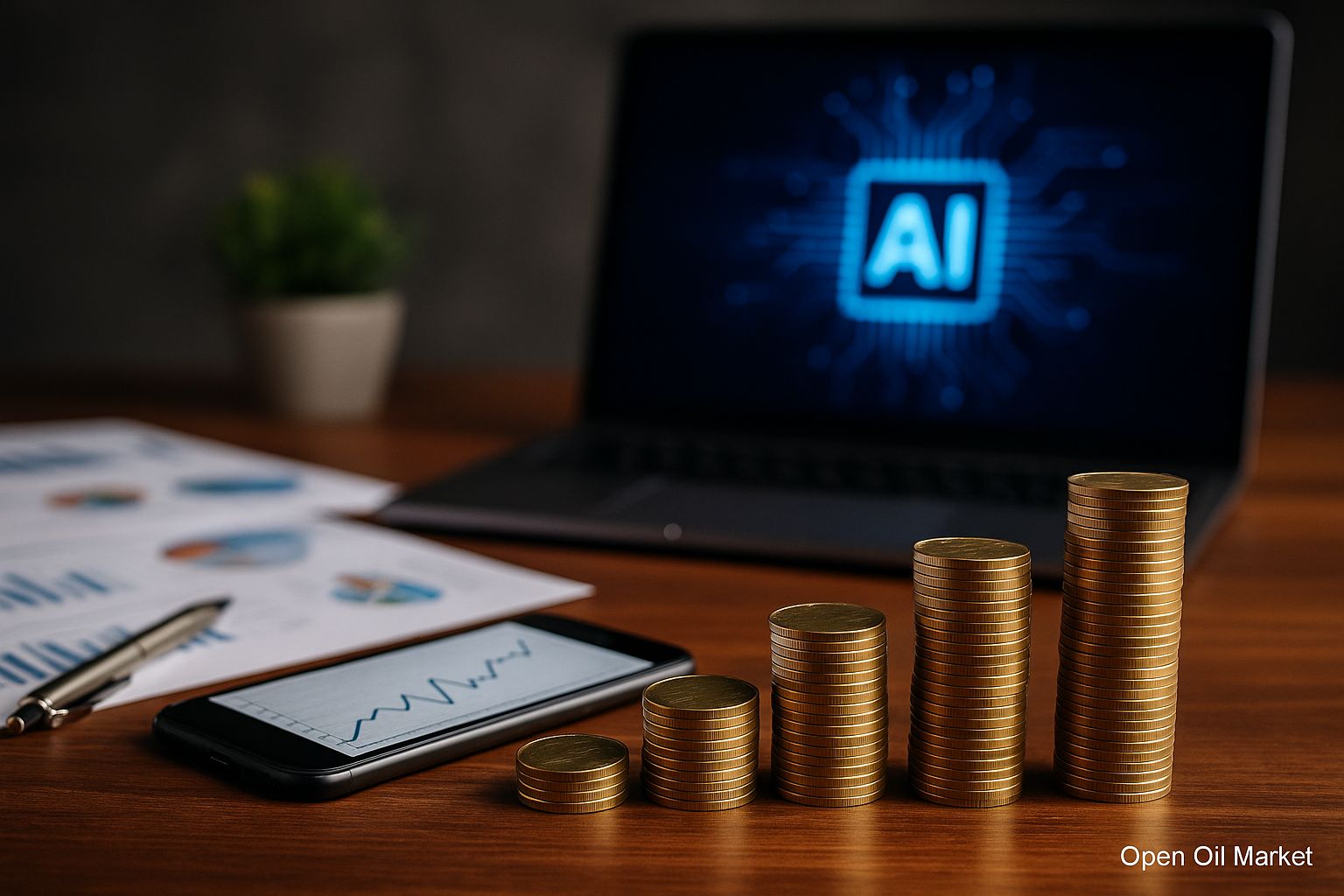
Global Overview of Venture Investments and Startups as of October 22, 2025: Mega Rounds in AI, Increased Interest in Fintech, Climate and Biotechnology Projects, Return of Mega Funds, and Revitalization of the IPO Market.
By the end of October 2025, the global venture capital market is showing a strong recovery after a prolonged decline in previous years. Investors around the world are actively funding technology startups again—record deals are being made, and companies' IPO plans are once more in the spotlight. Major players have returned to the arena with significant investments, while governments from various countries are ramping up their support for innovation. As a result, private capital is once again flooding into the startup ecosystem, providing the resources for a new growth spurt. According to industry analysts, the total volume of venture capital investments worldwide increased by nearly 40% year-over-year in the third quarter of 2025—clearly underscoring a revival in risk appetite.
The surge in venture capital activity is being observed across all regions. The U.S. continues to lead (especially in the artificial intelligence segment), while investment volumes in startup ventures in the Middle East have doubled compared to last year, and in Europe, Germany has surpassed the U.K. for the first time in terms of venture deals. Asia is experiencing a relative downturn in China due to regulatory uncertainty, while India, Southeast Asia, and Gulf countries are attracting record capital. Furthermore, the investment boom is reaching new frontiers: fueled by global growth, tech hubs are emerging in Africa and Latin America (for example, Africa recently saw a major investment of $100 million in the electric mobility sector). The startup ecosystems in Russia and the CIS countries are also striving to keep pace despite external constraints. A global early-stage venture boom is forming, although investors continue to act selectively and cautiously.
Below are key events and trends shaping the venture market agenda for October 22, 2025:
- The return of mega funds and large investors. Leading venture funds are attracting unprecedented amounts of capital and sharply increasing their investments, flooding the market with liquidity and enhancing risk appetite.
- Record rounds in AI and a new wave of “unicorns.” Unprecedented investment sizes are driving startup valuations to unseen heights, particularly in the artificial intelligence segment.
- Revitalization of the IPO market. Successful public offerings of technology companies and new listing applications confirm that the long-awaited "window" for exits has reopened.
- A boom in investments in defense technologies. The geopolitical situation stimulates increased interest in startups in defense and security, which are now at the forefront of the venture agenda.
- Diversification of industry focus. Venture capital is being directed not solely towards AI but also towards fintech, climate projects, biotechnology, defense developments, and even crypto startups.
- A wave of consolidation and M&A deals. New mergers, acquisitions, and strategic investments are reshaping the industry landscape, creating exit opportunities and accelerating company growth.
- Local focus: Russia and the CIS. Despite restrictions, new funds and initiatives aimed at developing local startup ecosystems are being launched, drawing investor attention to them.
The Return of Mega Funds: Big Money Back in the Market
The largest investment players are triumphantly returning to the venture scene, marking a new spike in risk appetite. For instance, the American firm Andreessen Horowitz has announced the formation of a new mega fund of around $20 billion for investments in promising AI startups, while the Japanese conglomerate SoftBank is launching Vision Fund III at approximately $40 billion, targeting cutting-edge technologies. Sovereign funds from Gulf countries have also increased their activity dramatically: they are pouring billions into technology projects and initiating national mega-programs, creating their own tech hubs in the Middle East. Simultaneously, dozens of new venture funds are being established worldwide, attracting significant institutional capital for investments in high-tech sectors.
The return of such “big money” from well-known Silicon Valley funds and global investors not only intensifies competition for the best deals but also instills confidence in the industry regarding further capital inflows. In the American venture sector, record reserves of uninvested capital (“dry powder”) have accumulated—hundreds of billions of dollars are ready to be deployed as new opportunities arise. Large funds are flooding the market with liquidity, providing resources for significant funding rounds and supporting the growth of promising companies.
Record Investments in AI and a New Wave of Unicorns
The field of artificial intelligence is the main driver of the current venture surge, demonstrating unprecedented funding levels. Investors worldwide are eager to invest in leaders of the AI sector, directing massive funds towards the most promising projects. For example, xAI, founded by Elon Musk, has raised approximately $10 billion in total investments, while AI model developer OpenAI secured funding of around $8-9 billion at a company valuation of around $300 billion. Rumor has it that one of the companies creating infrastructure for AI is negotiating a multibillion-dollar round at an extraordinarily high valuation. This investment frenzy has spawned a new wave of “unicorns”—startups valued over $1 billion.
A powerful influx of capital is rapidly inflating the valuations of young AI companies. AI startups are now achieving “unicorn” status at record speed, particularly in the segments of generative AI and supporting infrastructure. Although some experts warn of signs of overheating in the early stages (when any project labeled AI is assigned inflated multiples), the fear of missing the next technological revolution fuels further capital inflow. According to the Financial Times, the volume of venture investments in AI startups in 2025 is expected to exceed $200 billion—almost half of the entire market. So far, investor appetite for AI projects remains high, and the field of artificial intelligence is experiencing an unprecedented boom.
The IPO Market Awakens: A Window of Opportunity for Exits
The global market for initial public offerings of startups is emerging from dormancy and gaining momentum. In recent months, several notable venture companies have successfully conducted IPOs, receiving high ratings on the stock market. Investors are once again ready to purchase shares of technology newcomers, as evidenced by impressive debuts: for example, the software design developer Figma and fintech giant Circle successfully went public—seeing their market capitalization skyrocket in the early days of trading. Throughout 2025, the total number of technology IPOs has significantly increased compared to the previous year, with more than a dozen "unicorn" startups launching publicly on the global market in the third quarter alone, boasting a total capitalization exceeding $90 billion at listing.
Venture investors perceive these signals as confirmation that the long-awaited "liquidity window" for exits has truly opened. Many companies that postponed their IPO during the downturn of 2022-2023 are now renewing their IPO plans and submitting applications to regulators. Among anticipated large debuts is Swedish fintech unicorn Klarna, preparing for a placement at a valuation of around $14 billion, as well as several other technology "unicorns" in various regions of the world. The success of new listings not only allows founders and funds to lock in profits but also restores confidence that the venture cycle can once again conclude with planned exits. The opportunity for investment exits has opened up again, ensuring a flow of capital into the next generations of startups.
Defense Technology Boom: A New Priority for the Venture Market
Against the backdrop of geopolitical tensions, the niche of defense and military technologies is booming. Venture investors are increasingly financing startups related to defense, security, and aerospace. In Europe, investments in defense startups have multiplied since early 2022: just in the first months of 2025, companies in this sector attracted around €1.4 billion, which is many times more than in previous periods. The heightened interest is fueled by government contracts and the search for innovative solutions for the military—from drones to biotech sensors. American funds are not staying on the sidelines either: new players focused on military technologies have emerged in the U.S., and some existing corporations (such as large defense contractors) are launching their own venture divisions to seek promising developments.
The rapid influx of capital into the defense-tech sector is establishing a new priority in the venture market. Startups that were previously peripheral interests (military AI systems, battlefield robotics, cybersecurity, etc.) are now coming to the forefront. Although some analysts warn that the hype around defense technologies may reach a peak, investors remain willing to actively invest in this area, given the high demand from government clients and the acute relevance of developments. The boom of defense startups demonstrates how quickly venture capital adapts to new global challenges, redirecting towards areas that promise significant demand growth.
Diversification of Investments: Beyond AI
In 2025, venture investments are covering an increasingly wider range of industries and are no longer solely concentrated in the field of artificial intelligence. After the downturn of the previous year, funding is being renewed in other segments of the technology market, making the current surge more balanced. Funds are striving to diversify their portfolios, allocating capital to promising projects across different fields. Key sectors attracting investor attention include:
- Fintech: New financial technology services and digital banks continue to receive significant injections amid sustained demand for online services. Global investments in the fintech sector are again measured in tens of billions of dollars, demonstrating a "second wind" for the industry after the downturn of 2022-2023.
- Climate and "green" projects: Solutions in clean energy, emissions reduction, and eco-technologies are being supported due to the priority of sustainable development (ESG). For instance, a coalition of private venture firms led by Bill Gates’ Breakthrough Energy Ventures has formed a new fund of about $300 million to finance climate startups and plans to make its first investments shortly.
- Biotechnology, medicine, and health: Investments in developing new drugs, genetic research, longevity technologies, and medical devices remain high. Pharmaceutical giants and specialized funds are actively investing in biomedical and healthtech startups, anticipating breakthrough products and the vast potential of the health market. For example, Finnish smart ring developer Oura attracted about $900 million at a valuation of $11 billion, underscoring investor interest in health wearables.
- Cryptocurrencies and blockchain: After a decline in interest in recent years, crypto startups are once again appearing on venture investors' radars. Market stabilization in digital assets and progress in regulation have attracted attention to new projects in the fields of decentralized finance, blockchain infrastructure, and Web3.
Therefore, venture capital is now directed towards a wide array of industries—from finance and energy to medicine and crypto technologies. The strategy of expanding the industry focus aims to mitigate risks of overheating in specific segments (such as AI) and ensure a more sustainable development for the entire startup ecosystem.
Consolidation and M&A Deals: Growing Players
High startup valuations and fierce competition for new markets are pushing the industry towards consolidation. A wave of significant mergers and acquisitions is taking center stage once again, shifting the power dynamics in the technology sector. In the third quarter of 2025, numerous notable M&A transactions occurred, including the acquisition of several "unicorns" by strategic investors. Both large corporations aiming to acquire promising developments and successful startups themselves seeking to strengthen their market position are playing roles in the consolidation.
Major technology companies are actively acquiring innovative startups to broaden their product lines and outpace competitors. For example, market leaders in AI are buying smaller AI firms to bolster their technologies; in fintech, banks and payment systems are acquiring young services for integrating new features; and in biotech, pharmaceutical conglomerates are acquiring developers of promising drugs. Such consolidation is reshaping the industry landscape, enlarging key players and enabling the most successful projects to scale faster under the wings of major partners. For venture funds, the wave of M&A indicates additional exit paths for investments: strategic deals are increasingly becoming an alternative to IPOs, bringing overdue profits to investors. Although the overall volume of buyout deals may fluctuate quarterly, the trend towards business consolidation is evident—mergers and acquisitions have once again become an integral part of growth strategy in the technology sector.
Russia and the CIS: Local Initiatives Amid Global Trends
In Russia and neighboring countries, despite external constraints, there is also a revival of venture activity. According to industry research, in the first half of 2025, the volume of venture investments in the Russian Federation nearly doubled compared to the same period last year (though the initial figures remained modest), reaching approximately $78 million. At the same time, the total number of deals decreased, indicating a new trend: there is more money available, but there are fewer projects. In other words, investors are betting only on the strongest teams. The average round size has increased, and the requirements for startups have tightened: passing the selection process has become more challenging, but those projects that succeed in earning trust attract significantly more capital.
New funds and programs aimed at supporting technological companies are being launched in the region. Government institutions and large corporations are increasingly participating in developing the local startup scene: industry accelerators, regional venture funds (for example, the Moscow AI Development Fund or corporate funds within state-owned companies), and innovative clusters are being established. These initiatives are intended to compensate for the outflow of foreign capital and integrate local projects into global trends. Despite sanctions barriers, the Russian and CIS ecosystems strive to follow global trends—from artificial intelligence to new industrial technologies. Gradually, the local venture market is restoring trust: investors are showing cautious interest in competitive startups domestically and preparing to finance their growth.
Cautious Optimism and Sustainable Growth
By the end of autumn 2025, moderately optimistic sentiments have emerged in the venture industry. Successful IPOs and major deals signal that the downturn period is behind, although investors still prefer to operate selectively and focus on projects with sustainable business models. Massive capital inflows into areas such as AI, fintech, defense technologies, and other sectors instill confidence in future growth. However, funds are increasingly monitoring risks, striving to avoid overheating in the market. The industry is entering a new phase of development focused on quality, balanced growth. Market participants are cautiously optimistic: there is an understanding that the impending wave of innovation can yield significant results if a reasonable balance is maintained between ambitious investments and discipline in risk assessment.




